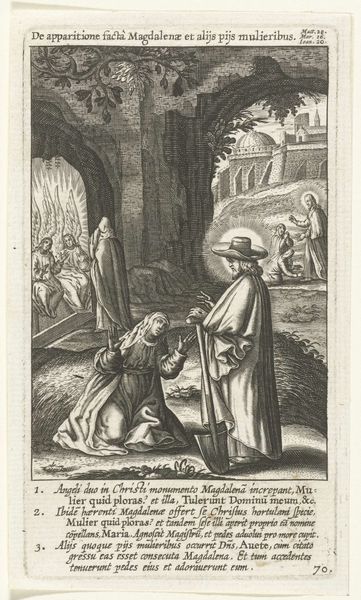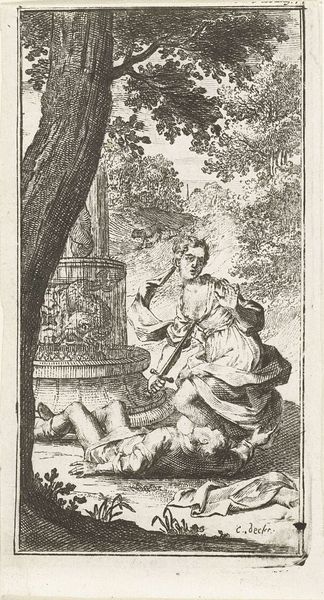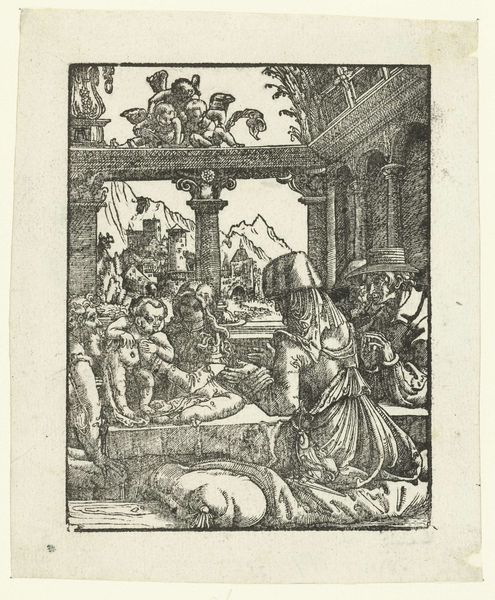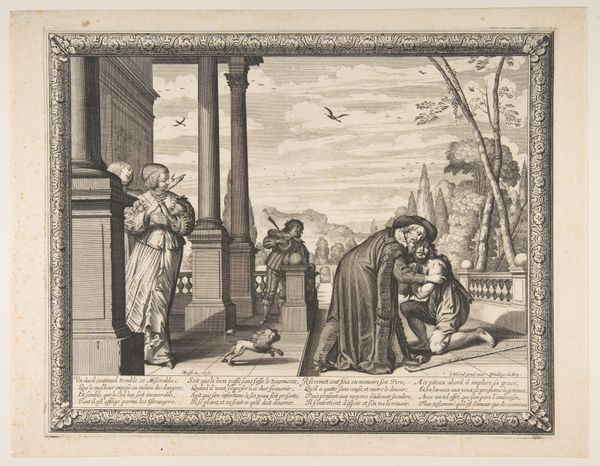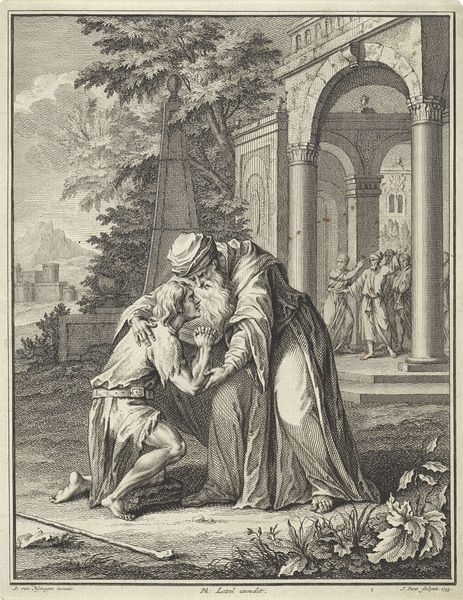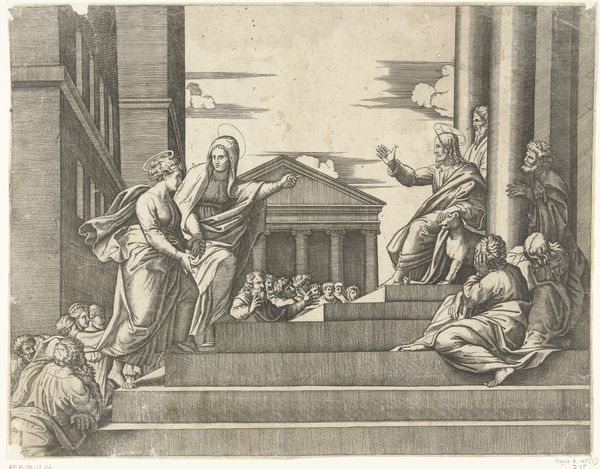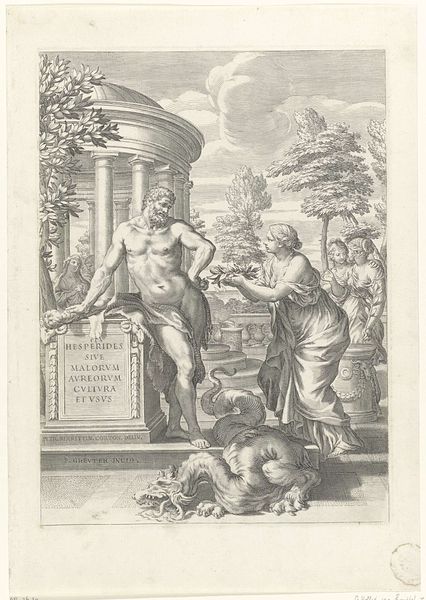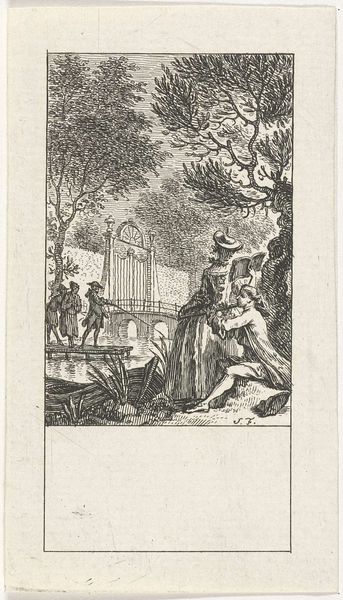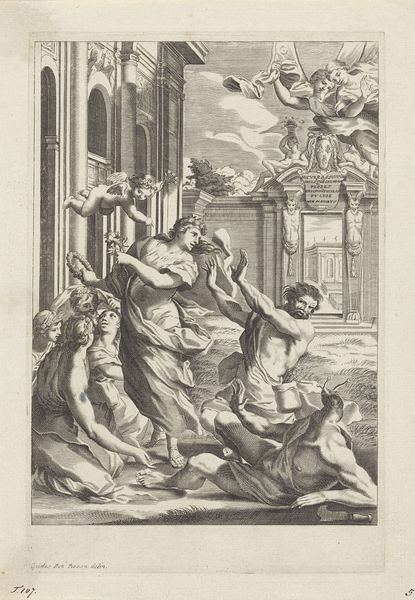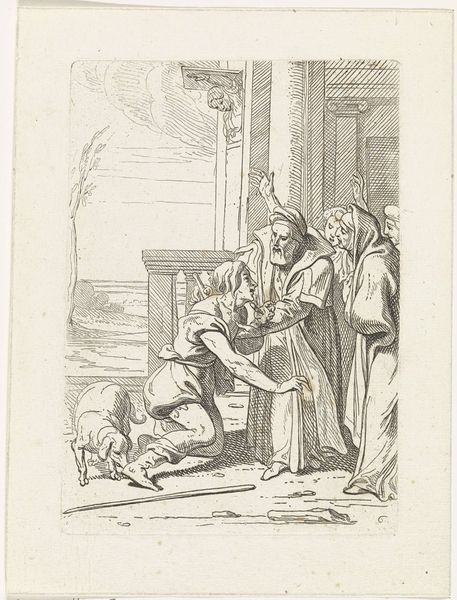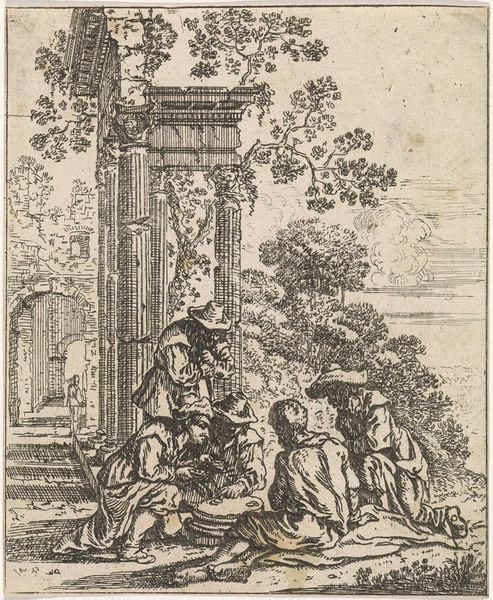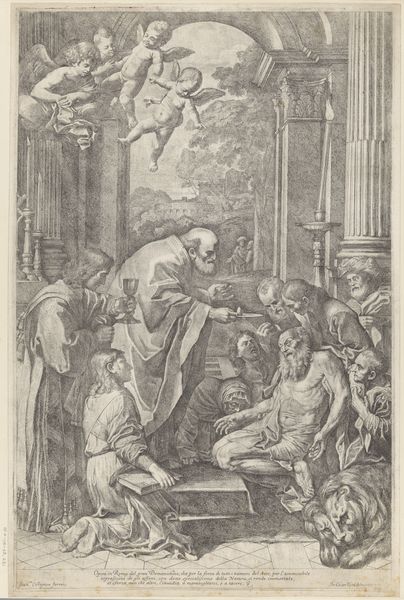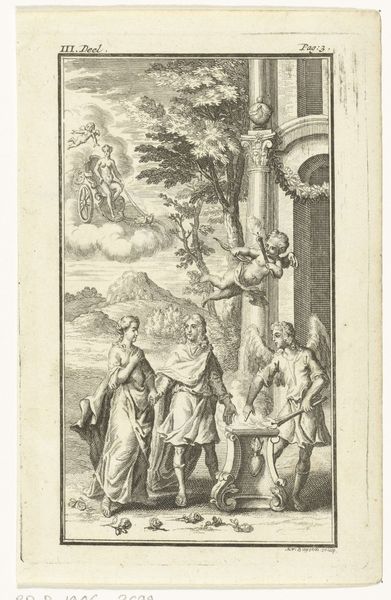
print, engraving
#
baroque
# print
#
figuration
#
line
#
history-painting
#
engraving
Dimensions: height 118 mm, width 85 mm
Copyright: Rijks Museum: Open Domain
Editor: Here we have Jan Baptist Berterham’s engraving, “The Return of the Prodigal Son,” created sometime between 1696 and 1721. The level of detail achieved through the line technique is incredible, especially considering it's a print. What symbols stand out to you the most in this scene? Curator: Immediately, my eyes are drawn to the contrast between the architectural grandeur and the humble figure of the son. The elaborate building behind them symbolizes earthly power and perhaps societal expectations, a gilded cage of sorts. Notice how that contrasts with the small shed in the background? And even more explicitly the swine? Where do you think the artist wants our focus? Editor: It's definitely pulled toward the son; the father's embrace also leads us to the figure of the son, even the dog in the foreground seems to be guiding our gaze there. But why include the dog? Curator: Dogs have been symbols of fidelity and loyalty for centuries, across many cultures. Its presence suggests forgiveness, an unconditional love embodied by the father figure. In a way, he acts as another beacon, emphasizing the welcoming home. How do you think the engraving reflects broader themes of societal values in its era? Editor: The print medium itself, being reproducible, speaks to accessibility and widespread distribution of the story’s moral lessons at that time, perhaps reinforcing societal norms, forgiveness, and repentance. Curator: Exactly! It's a reminder that art wasn't just about aesthetic beauty; it also functioned as a powerful tool for cultural transmission, reminding us about how integral biblical stories were for shared understanding during the Baroque period. Editor: I hadn’t considered how the choice of printmaking itself emphasizes the broad impact and purpose of religious storytelling in daily life!
Comments
No comments
Be the first to comment and join the conversation on the ultimate creative platform.
